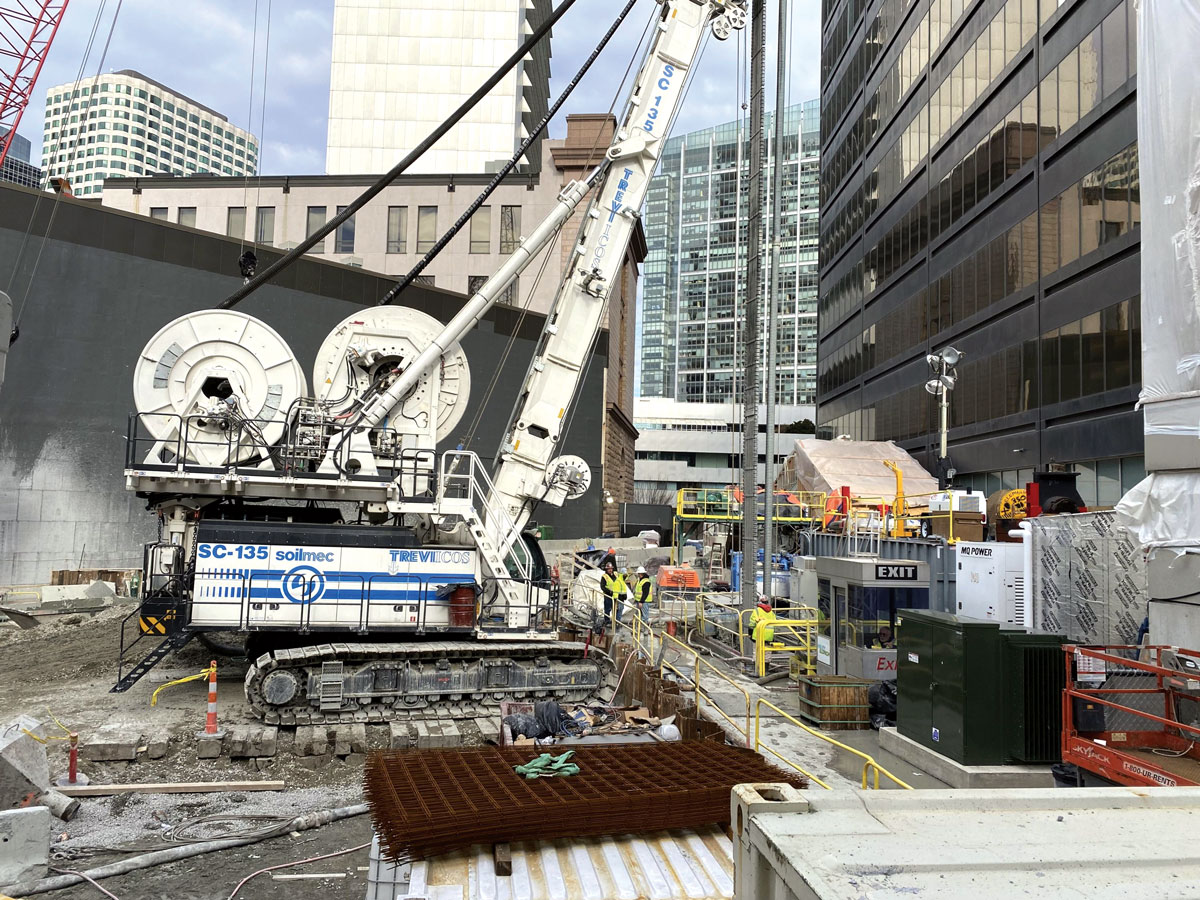
Between September 2021 and February 2022, Treviicos, U.S. branch of the Trevi Group, was involved in the South Station Tower project in Boston.
This project is part of the South Station Air Rights Project, which includes other upgrades and improvements of the historic South Station Transportation Center and includes new foundation elements for a new 51-storey mixed use tower (offices and residential). Load Bearing Elements (LBEs) were selected as the most appropriate foundation system for the new tower based on load support, constructability considerations and economics. The new tower will be supported on eight super columns which in turn will be supported by a continuous array of LBEs of 0.91 metres thick and over 120 feet deep into bedrock.
Subsurface conditions consisted of fill, organic deposits, marine deposits, glacial deposits (glacial till, glaciomarine, glaciofluvial) and bedrock. Bedrock was classified as Cambridge Argillite with average and maximum compressive strengths of 4,034 psi and 5,485 psi, respectively. The LBEs were constructed with a combination of mechanical clamshell grab and Soilmec SC-135 Hydromill cutter. The clamshell grab was typically used to excavate the overburden soils down to the top of bedrock and the Hydromill cutter was used to excavate the bedrock down to the design LBE tip elevation.
Polymer slurry was successfully used for support of LBE trench excavations and was found to provide good trench stability throughout the LBE installation process from excavation to tremie concrete placement. All polymer slurry was processed through an on-site desanding plant to remove soil and rock cuttings along with a centrifuge for additional solids separation.
The LBEs had an average concrete depth exceeding 120 ft. and were socketed into bedrock up to 104 ft. Total area of reinforced concreted LBEs is approximately 48,000 square feet, which includes a total volume of tremie concrete placed of 5,800 cubic yards and 350 tons of reinforcing steel. In addition, 12 of the 46 LBEs included pairs of W14 structural columns for connections to the tower base foundation above ground. Three additional LBEs were constructed for two tower crane foundations. All reinforcing steel and structural columns were assembled at an off-site staging yard and delivered to site according to the installation schedule.
The project included strict quality control procedures, including Cross Hole Logging (CSL) to evaluate concrete quality and verify no anomalies exist that could affect the load carrying capacity of LBEs. All CSL testing was performed by a third party geotechnical engineering services firm and all testing results met the specified requirements.
Why is the scheme exciting/challenging/innovative?
- Very tight site working conditions between historic South Station head house and active passenger platforms for Amtrak and MBTA commuter rail lines.
- Bedrock excavation with Hydromill up to 104 ft embedment.
- Installation of LBEs through operating personnel service tunnel.
- Installation of W14 structural columns within LBE reinforcing steel cage.
- CSL performed on LBEs to evaluate concrete quality and verify that no anomalies exist that could affect the load carrying capacity of LBE.

-
Donald Bailey’s Bridge
April 23, 2024 -
From Historic Foundations to Modern Marvels
April 18, 2024 -
Canadian Construction Trends for 2024
April 16, 2024 -
Substance Use in the Trades
April 12, 2024 -
Putting Technology to Work in Your Business
April 12, 2024